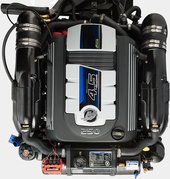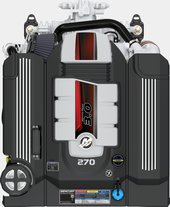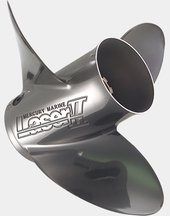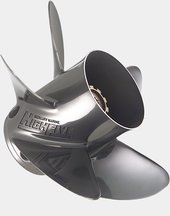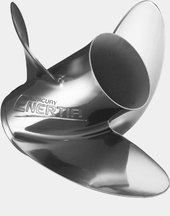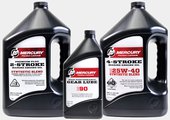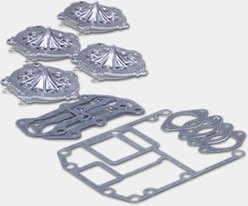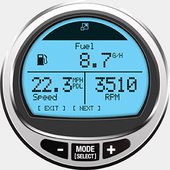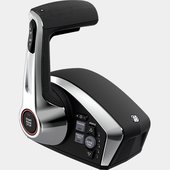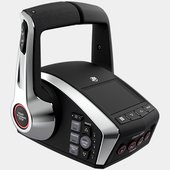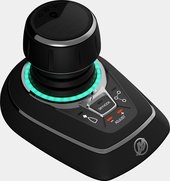The sterndrive conspiracy

MerCruiser was not the world’s first commercially viable sterndrive, but it could have been.
The first “inboard/outboard,” or sterndrive, was introduced by Johnson Motor Company in 1930, but the need to redesign most boats to accommodate the new system resulted in poor sales.
Many years later, the official story of how the modern sterndrive was eventually introduced held that a former Kiekhaefer Mercury engineer, Jim Wynne, overcame the inherent design difficulties by introducing a double universal joint that allowed the drive to swing back and forth for steering, and tilt up and down. The result was an engine and drive with the maneuverability of an outboard and the power of an inboard.
In reality, it was the result of a covert plan that worked. The design Wynne patented in 1958 actually originated when his former boss, Charlie Strang, sketched it in 1948 as a young boat racer and MIT engineering student with hopes of breaking the outboard speed record. He envisioned a lightweight car engine with an outboard lower unit and hoped the American Power Boat Association would recognize it as an outboard for record purposes; it did not, and Strang moved on.
Ten years later, Strang and Wynne pitched the idea to their boss, Mercury founder Carl Kiekhaefer, who rejected it. The pair, along with co-worker Charles Alexander, talked of forming their own company to bring the sterndrive to market. After a falling out with Kiekhaefer, Wynne left the company, filed a patent, and sold the rights to Volvo Penta, the entire time working clandestinely with his cohorts to fine-tune the design.
Volvo Penta’s “Aquamatic” was introduced in 1959 to great fanfare, which motivated Kiekhaefer to have Strang begin work on a Mercury version of the drive. When Kiekhaefer learned that Outboard Marine Corporation would introduce an 80hp sterndrive at the 1961 Chicago boat show, he announced a 100hp sterndrive by Mercury two days earlier, stealing the thunder of the competition.
The secret of the sterndrive’s development was one that Jim Wynne took to his grave, but it was revealed in 1991 with the publication of Iron Fist, the biography of E. Carl Kiekhaefer. Today, MerCruiser is the most popular sterndrive in the world, with 3 million units sold.

A star is born, reluctantly
Carl Kiekhaefer had little interest in the sterndrive, fearing it would cut into outboard sales, and he was right — in the long run.
“Let someone else go first, someone else try the rotten stairway,” Kiekhaefer said at the time.
When Volvo-Penta introduced the “Aquamatic” in 1959 — a design conceived by his own engineering team, unbeknown to him — Kiekhaefer green-lighted the MerCruiser Sterndrive, and true to form, exploited the strategic errors of his competitors.
While they positioned against the highest horsepower outboards, Kiekhaefer launched MerCruiser in the 110hp to 140hp range and immediately began work on a second drive that would handle 225hp to 300hp.
While MerCruiser arrived 2.5 years after the competition, by the end of 1961 it had captured the bulk of the sterndrive market with two drives and a wide array of high-horsepower engines.


